Kia Ceed VS Tesla Model S – Specs, Efficiency & Price Comparison
Which model is the better choice – the Kia Ceed or the Tesla Model S? We compare performance (140 HP vs 1020 HP), boot capacity (395 L vs 793 L), efficiency (6 L vs 17.50 kWh), and of course, the price (23100 £ vs 79700 £).
Find out now which car fits your needs better!
The Kia Ceed ({ body-type_1}) is powered by a Petrol MHEV, Petrol engine and comes with a Automatic, Manuel transmission. In comparison, the Tesla Model S (Hatchback) features a Electric engine and a Automatic gearbox.
When it comes to boot capacity, the Kia Ceed offers 395 L, while the Tesla Model S provides 793 L – depending on what matters most to you. If you’re looking for more power, you’ll need to decide whether the 140 HP of the Kia Ceed or the 1020 HP of the Tesla Model S suits your needs better.
There are also differences in efficiency: 6 L vs 17.50 kWh. In terms of price, the Kia Ceed starts at 23100 £, while the Tesla Model S is available from 79700 £.
Compare all the key specs now and find out which model fits your lifestyle best!
In a head-to-head comparison between the Kia Ceed and the Tesla Model S, drivers can expect a stark contrast in performance and technology. While the Kia Ceed offers practicality and value with its fuel efficiency and spacious interior, the Tesla Model S impresses with its cutting-edge electric performance and advanced autopilot capabilities. Ultimately, the choice will depend on whether buyers prioritize everyday usability or the thrill of innovative electric driving.
Kia Ceed
The Kia Ceed stands out in the compact car segment with its sleek design and impressive handling. It offers a comfortable and well-equipped interior that appeals to both drivers and passengers. With its efficient engine options, the Ceed provides a smooth and enjoyable driving experience suitable for city commutes and longer journeys alike.
details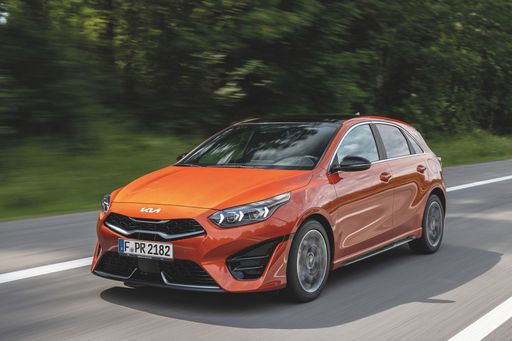 @ press.kia.com
@ press.kia.com
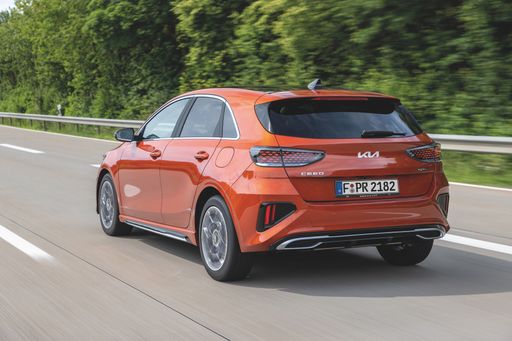 @ press.kia.com
@ press.kia.com
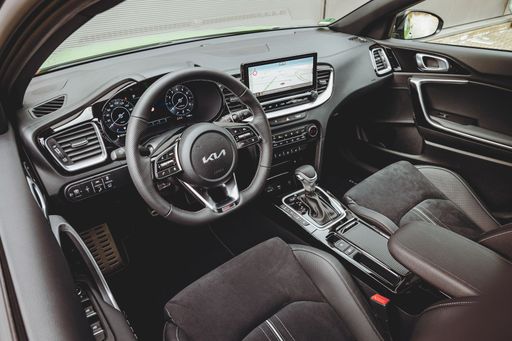 @ press.kia.com
@ press.kia.com
Tesla Model S
The Model S continues to set the standard for luxury electric vehicles, seamlessly blending performance with cutting-edge technology. Its sleek design and spacious interior provide an unparalleled driving experience, making it an ideal choice for modern enthusiasts. With features that emphasize both safety and sustainability, the Model S showcases the future of automotive innovation.
details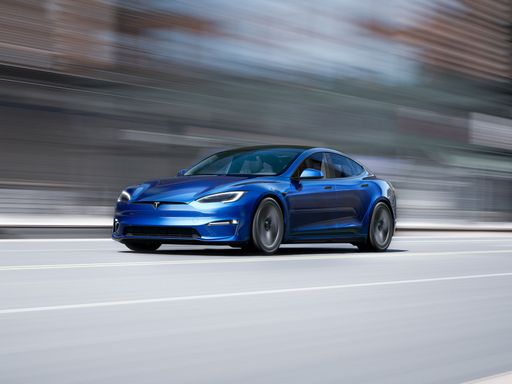 @ Tesla
@ Tesla
 @ Tesla
@ Tesla
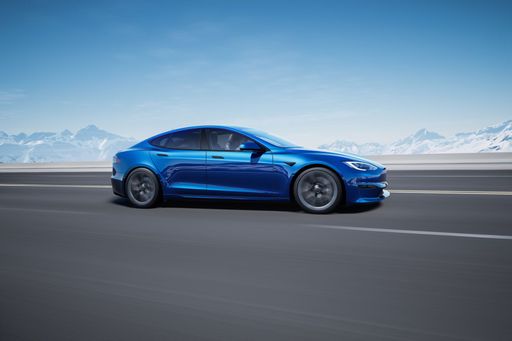 @ Tesla
@ Tesla
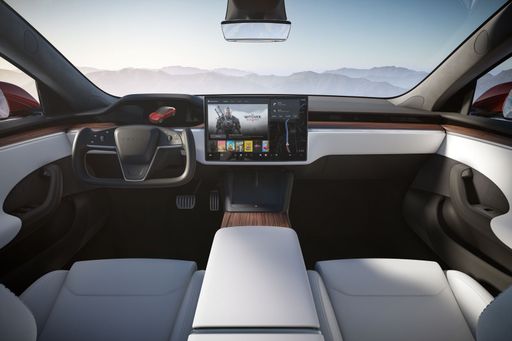 @ Tesla
@ Tesla
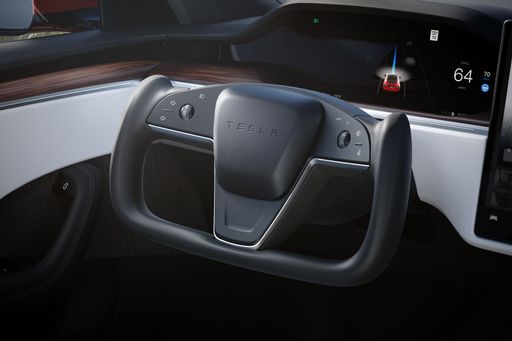 @ Tesla
@ Tesla
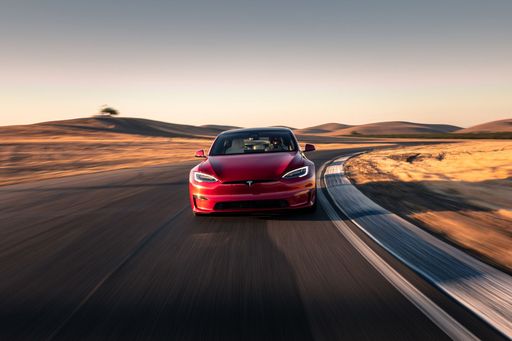 @ Tesla
@ Tesla
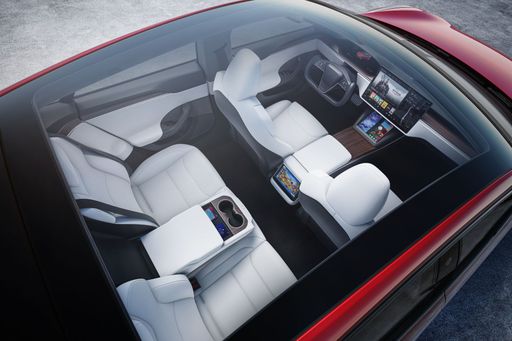 @ Tesla
@ Tesla
When it comes to car comparisons, few pairings are as intriguing as the Kia Ceed and the Tesla Model S. While the Kia Ceed embodies the practicality and efficiency of a traditional internal combustion car, the Tesla Model S showcases the innovations and performance capabilities of electric vehicles. This article will dive into their technical specifications, innovations, and overall driving experiences to determine how these two automotive giants stack up against each other.
Powertrain and Performance
The Kia Ceed offers a selection of petrol engines, providing a range of power outputs from 100 to 140 HP. Its engine efficiency is notable, with a consumption rate of approximately 6.0 to 6.4 L/100km, making it suitable for those conscious of fuel costs. The Ceed typically achieves a respectable acceleration of 0-100 km/h in about 9.5 to 13.2 seconds, reaching a top speed of 178 to 197 km/h.
In contrast, the Tesla Model S is available with robust electric powertrains, producing an impressive output of 670 to 1020 HP. This electric marvel boasts an exceptional acceleration time, clocking in at a staggering 2.1 to 3.2 seconds to reach 100 km/h. With a top speed ranging between 250 and 300 km/h, the Model S leaves its competition far behind in its wake.
Driving Dynamics and Handling
The Kia Ceed features front-wheel drive with both manual and dual-clutch automatic transmission options. Its dimensions, notably a length of 4315 to 4325 mm and a width of 1800 mm, contribute to a compact yet spacious configuration, accommodating five passengers comfortably. With curb weights ranging between 1298 and 1390 kg, the Ceed remains agile, providing a balanced driving experience on urban roads.
On the other hand, the Tesla Model S’s all-wheel-drive system provides excellent traction, especially in adverse weather conditions. Being significantly heavier, with a curb weight of 2170 to 2265 kg, the Model S benefits from its low center of gravity due to the battery placement, enhancing stability and handling. Its length of 5021 mm and width of 1987 mm provide a luxurious interior space but may be less maneuverable than smaller hatchbacks.
Interior and Technology
Inside, the Kia Ceed equips drivers with a blend of modern technology and user-friendly interfaces. While the interior is practical, featuring adequate trunk space of 357 to 395 liters, it may not capture the same level of futuristic ambition as its electric counterpart. However, it does not skimp on essential features, such as advanced infotainment systems and driver assistance technologies.
Conversely, the Tesla Model S offers an expansive trunk space of up to 793 liters, thanks to its hatchback design, making it incredibly versatile for everyday use and travel. The interior is dominated by a large touchscreen that controls nearly all vehicle functions, providing an immersive user experience. Tesla's Autopilot, one of the most sophisticated driver-assistance systems, is a testament to the brand’s commitment to innovation and safety.
Environmental Impact and Efficiency
In terms of environmental considerations, the Kia Ceed falls into the CO2 efficiency class E, releasing between 137 and 146 g/km, which is still relatively moderate compared to many gasoline vehicles but pales in comparison with electric models.
The Tesla Model S, with its impressive electric range of 600 to 634 km on a single charge, boasts a CO2 efficiency class of A, emitting zero tailpipe emissions. This significant advantage positions the Model S as an environmentally conscious alternative, appealing to eco-friendly consumers.
Cost of Ownership
Cost-wise, the Kia Ceed presents itself as an affordable and practical choice, appealing to budget-conscious customers who appreciate traditional driving. With lower initial costs and the efficiency of petrol engines, it makes for a sensible option for many drivers.
The Tesla Model S, while significantly more expensive upfront, offers potential savings in fuel and maintenance costs. The electric vehicle landscape continues to evolve, with government incentives and reduced charging costs making ownership increasingly appealing.
Conclusion
In conclusion, the Kia Ceed and Tesla Model S represent two ends of the automotive spectrum. The Ceed excels in affordability and practicality, providing reliable performance for everyday driving. Meanwhile, the Tesla Model S stands out with its electrifying performance and cutting-edge technology, making it a pioneer in the EV landscape. The decision between these two models ultimately boils down to personal preferences, budget considerations, and values regarding sustainability and innovation in the automotive world.

|

|
|
|
|
Costs and Consumption |
|
|---|---|
|
Price
23100 - 31300 £
|
Price
79700 - 92600 £
|
|
Consumption L/100km
6 - 6.4 L
|
Consumption L/100km
-
|
|
Consumption kWh/100km
-
|
Consumption kWh/100km
17.5 - 18.7 kWh
|
|
Electric Range
-
|
Electric Range
600 - 634 km
|
|
Battery Capacity
-
|
Battery Capacity
-
|
|
co2
137 - 146 g/km
|
co2
0 g/km
|
|
Fuel tank capacity
50 L
|
Fuel tank capacity
-
|
Dimensions and Body |
|
|---|---|
|
Body Type
Hatchback
|
Body Type
Hatchback
|
|
Seats
5
|
Seats
5
|
|
Doors
5
|
Doors
5
|
|
Curb weight
1298 - 1390 kg
|
Curb weight
2170 - 2265 kg
|
|
Trunk capacity
357 - 395 L
|
Trunk capacity
793 L
|
|
Length
4315 - 4325 mm
|
Length
5021 mm
|
|
Width
1800 mm
|
Width
1987 mm
|
|
Height
1442 - 1447 mm
|
Height
1431 mm
|
|
Payload
470 - 500 kg
|
Payload
364 kg
|
Engine and Performance |
|
|---|---|
|
Engine Type
Petrol MHEV, Petrol
|
Engine Type
Electric
|
|
Transmission
Automatic, Manuel
|
Transmission
Automatic
|
|
Transmission Detail
Automat. Schaltgetriebe (Doppelkupplung), Schaltgetriebe, Manual Gearbox, Dual-Clutch Automatic
|
Transmission Detail
Reduction Gearbox
|
|
Drive Type
Front-Wheel Drive
|
Drive Type
All-Wheel Drive
|
|
Power HP
100 - 140 HP
|
Power HP
670 - 1020 HP
|
|
Acceleration 0-100km/h
9.5 - 13.2 s
|
Acceleration 0-100km/h
2.1 - 3.2 s
|
|
Max Speed
178 - 197 km/h
|
Max Speed
250 - 300 km/h
|
|
Torque
172 - 253 Nm
|
Torque
-
|
|
Number of Cylinders
3 - 4
|
Number of Cylinders
-
|
|
Power kW
74 - 103 kW
|
Power kW
493 - 750 kW
|
|
Engine capacity
998 - 1482 cm3
|
Engine capacity
-
|
General |
|
|---|---|
|
Model Year
2024
|
Model Year
2022 - 2023
|
|
CO2 Efficiency Class
E
|
CO2 Efficiency Class
A
|
|
Brand
Kia
|
Brand
Tesla
|
Kia Ceed
Discovering the Kia Ceed: A Symbol of Modernity
In the dynamic world of automotive engineering, Kia has consistently stood out with its innovative and reliable models. The Kia Ceed is no exception, bringing a blend of efficiency, style, and cutting-edge technology to the table. Let's delve into the details of this eye-catching hatchback and uncover what makes it an alluring choice for modern drivers.
Power and Performance: Under the Hood
The Kia Ceed is equipped with an impressive range of powertrains, offering a selection between petrol engines and mild-hybrid technology. The engine lineup boasts power outputs from 100 to 140 PS, catering to both economical driving needs and those seeking a bit more thrill on the road. The engine choices are complemented by either a smooth manual transmission or a state-of-the-art dual-clutch automatic, ensuring an engaging driving experience tailored to individual preferences.
Efficient and Eco-Friendly Engineering
Kia's dedication to eco-friendliness is evident in the Ceed's engineering, offering remarkable fuel efficiency between 6 to 6.4 L/100km. This focus not only keeps running costs low but also helps reduce emissions, maintaining a responsible footprint with CO2 emissions ranging from 137 to 146 g/km. This efficient performance ensures the Kia Ceed is both a financially savvy and environmentally considerate choice.
Advanced Technologies and Safety Features
Innovation is at the heart of the Kia Ceed's design, with a suite of advanced technological features enhancing comfort and safety. The latest driver-assist systems help keep occupants secure, providing confidence on every journey. Lane Keeping Assist, Forward Collision Warning, and Intelligent Speed Limit Assist are just some of the high-tech features that work seamlessly in the background, making driving both safer and more relaxed.
Styling and Comfort: A Perfect Cabin Space
Stepping into the Kia Ceed, drivers and passengers are greeted by a sophisticated interior, designed for comfort and style. Seen in multiple variants including the Nightline Edition and GT Line, the Ceed offers a premium feel across all its models. With dimensions that promise ample space—stretching up to 4325 mm in length and offering a boot capacity between 357 to 395 L—the Ceed perfectly accommodates both daily commutes and adventurous getaways.
Value for Money: A Wise Investment
Balancing a competitive initial outlay, ranging from €25,590 to €35,090, with low running costs, the Kia Ceed redefines value for money. This hatchback's adaptability to various lifestyle needs, paired with monthly costs from €887 to €1,019, positions it as a wise investment in the current automotive market.
Conclusion: The Kia Ceed in a Nutshell
The 2024 Kia Ceed superbly combines power, efficiency, and cutting-edge innovations, making it a noteworthy contender in the hatchback segment. Whether it’s the eco-friendly credentials, advanced safety systems, or the blend of practicality and style, the Kia Ceed is primed to lead the way in the evolving era of modern vehicles.
Tesla Model S
The Revolutionary Tesla Model S: The Pinnacle of Electric Vehicles
The Tesla Model S has reshaped the landscape of electric vehicles since its introduction, combining luxury, performance, and cutting-edge technology into a single package. As we delve into the technical aspects and innovations of this remarkable car, it becomes clear why it stands out in an increasingly crowded market.
Performance That Redefines Speed
The latest iterations of the Tesla Model S offer exhilarating performance, with two distinct variants: the standard Model S and the thunderous Model S Plaid. The standard Model S is powered by a robust electric motor producing 670 horsepower, allowing for a jaw-dropping 0-100 km/h time of just 3.2 seconds. For those who demand even more power, the Model S Plaid boasts a staggering 1,020 horsepower, achieving the same speed in an incredible 2.1 seconds.
Both models feature all-wheel drive and a sophisticated reduction gearbox that ensures optimal traction and efficiency, making every drive an exhilarating experience. The Model S’s top speed reaches up to 250 km/h for the standard version, while the Plaid variant impressively escalates to 300 km/h.
Range and Efficiency: Driven by Innovation
One of the most significant concerns for electric vehicle owners is range, and Tesla has addressed this head-on with the Model S. The standard Model S boasts an impressive electric range of 634 km on a single charge, demonstrating the extraordinary efficiency of Tesla’s engineering. The Plaid model, while slightly less at 600 km, still puts many competitors to shame.
The energy consumption rates for both models are equally commendable, with the standard version achieving a remarkable 17.5 kWh/100 km and the Plaid version at 18.7 kWh/100 km. This high efficiency is not only good for the environment but also for the owner's wallet, providing longer driving ranges between charges.
Innovative Technology and Features
The Tesla Model S is loaded with high-tech features designed to enhance the driving experience. The centerpiece of this technological innovation is its large touchscreen interface. This 17-inch display controls virtually every aspect of the vehicle, from navigation to climate control, creating a streamlined and modern cabin environment.
Additionally, the Model S includes advanced autopilot features that allow for semi-autonomous driving capabilities, redefining what drivers can expect from their vehicles. These innovations highlight Tesla's commitment to safety and convenience, making the Model S not just a car but an advanced tech-laden machine.
Luxury Meets Practicality
The Model S does not compromise on luxury. With a spacious interior accommodating five passengers and a premium finish, it offers comfort that rivals luxury sedans. The trunk capacity of 793 liters ensures ample space for luggage or other essentials, making it a practical choice for families or long road trips.
Moreover, its sleek hatchback design merges elegance with functionality, while the eco-conscious design features a remarkable CO2 efficiency class of A, underscoring Tesla’s commitment to sustainability.
Conclusion: The Future Is Electric
The Tesla Model S exemplifies the future of automotive technology, merging unparalleled performance, innovative features, and luxury. As electric vehicles continue to gain traction in the global market, the Model S stands as a benchmark, illustrating what is possible when cutting-edge technology meets passionate engineering. As drivers demand more from their vehicles, the Model S proves itself not just as a car, but as a movement toward a sustainable and exhilarating future.
The prices and data displayed are estimates based on German list prices and may vary by country. This information is not legally binding.
